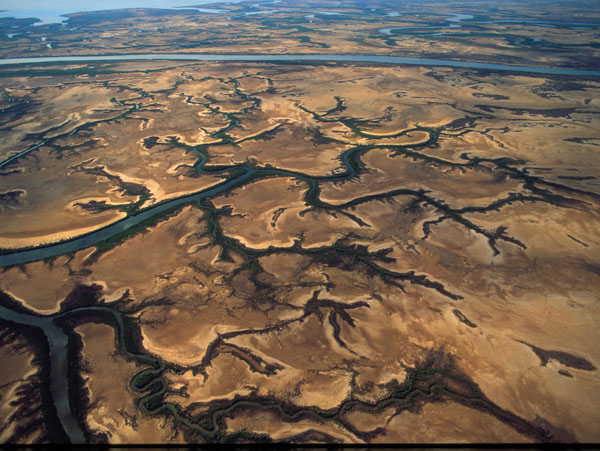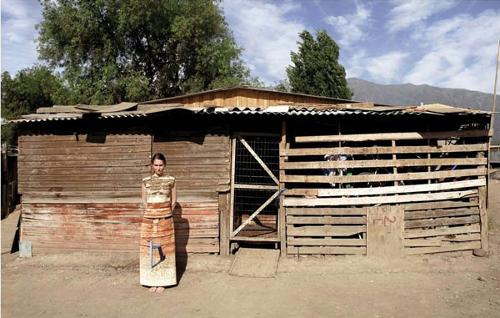
Photographer Richard Woldendorp, who recently turned eighty, is a Western Australian state treasure. He's co-authored a book with literary icon Tim Winton (Down to Earth) which probably says everything you need to know about the status he holds here in Perth. But is it possible to get past the credentials, the mythology of this elder statesman and see his work like you're seeing it for the first time? Perhaps not. The post-modern hangover of separating the artist from their work is still lingering today but after only a few minutes with Woldendorp's photos it became clear that, in this case at least, this separation wasn't going to happen.
Don't get me wrong, Woldendorp's photos hold enough weight beyond the reputation that precedes them. It's just that his images read to me like an intimate epic of a man's personal journey. This particular series of digital prints is a mixture of work dating back as far as 1980. All but one are abstract aerial views that bring the grandeur and massive expanse that is the landscape of our North into a more approachable context. This is done mainly through associating compositional elements and is in no small part due to Woldendorp's knowledge of the capabilities of his lens, but there are other concurrent stories running here as well.
One of these is for me what makes Woldendorp's images so interesting. Besides the obvious seductive combination of sublime aesthetics is the agency that goes into each and every photograph. Between plane, pilot, camera, photographer, weather and light there is a myriad of elements involved in this photographic process. That Woldendorp so often succeeds in nailing a memorable image from 1000m up in a plane, with such a cornucopia of ongoing relational exchanges, is quite amazing.
So how is it that these images seem so in tune with this landscape, its abstractions, contours and shifting compositions? And how does his migration from Holland some fifty years ago link to an almost insatiable appetite for describing the topography of the Australian landscape?
'Tidal Mudflats' near Derby, taken in 1980 is a rollicking image of swirling land and sea as they meet, that looks for all the world like a silk sheet grabbed and twisted by the hand; sensual in appearance, almost violent in metaphor. It is the earliest work in this show but already it is quintessentially Woldendorp, translating all the possibilities of the beauty in our landscape by describing it to us in a way that is personal and cultural, sensual but untouched. Woldendorp enhances the virginity of the landscape and his visual experience of it by presenting to us exactly what is there. 'Tidal Mudflats' gives up a classical combination of acceptance and possibility; it is also interestingly like much of the work, a clash point between European pictorial sensibilities and Aboriginal visual mapping.
'Forrest River', north-west of Wyndham, shot in 2002 is a winding brown snake tinged with green scales and veins, its colours mute at certain points, fluorescent at others. Again it is an image filled with scope and possibility, willed into existence through one man's acceptance of life's twists and turns. There is no imposition by the photographer on you, no telling of lessons, no mandate and this all seems remarkable to me given that we know these images require a huge amount of agency to construct.
This non-imposition is a significant gift and one that Woldendorp's work uses as its engine. I think he understands the need for us to belong in this landscape, but equally the feeling that we don't. His use of isolated landscapes, where elements of water and land meet, speaks to me of journeys, more specifically his own coming to this land. But his photographs are aerial, once removed from that same landscape and so at once Woldendorp gives us a personal narrative and a more universal one - food for the gods in the hands of such an excellent photographic technician.












